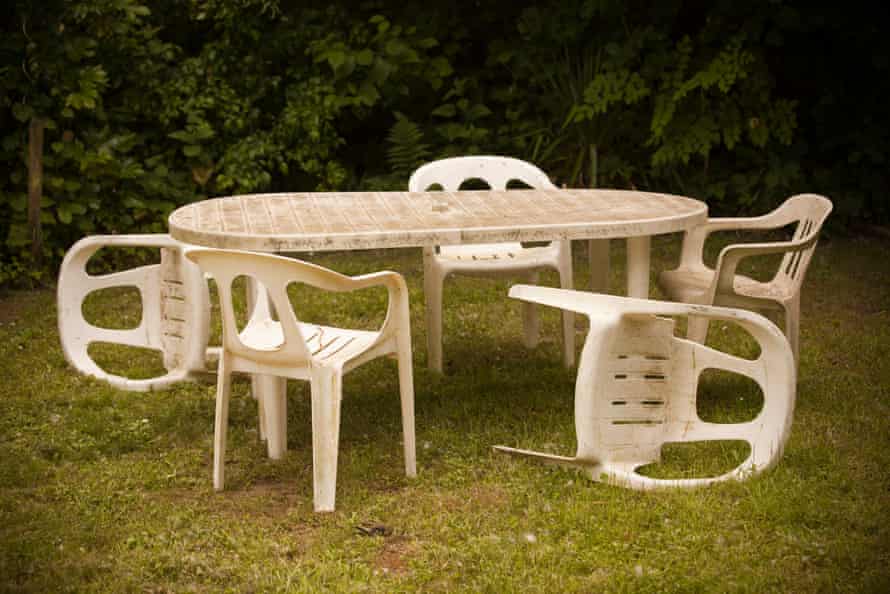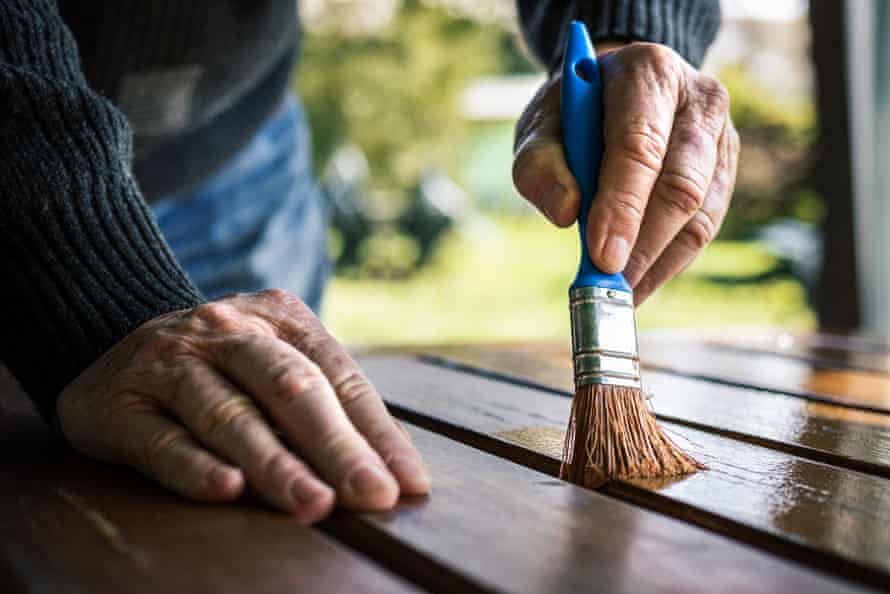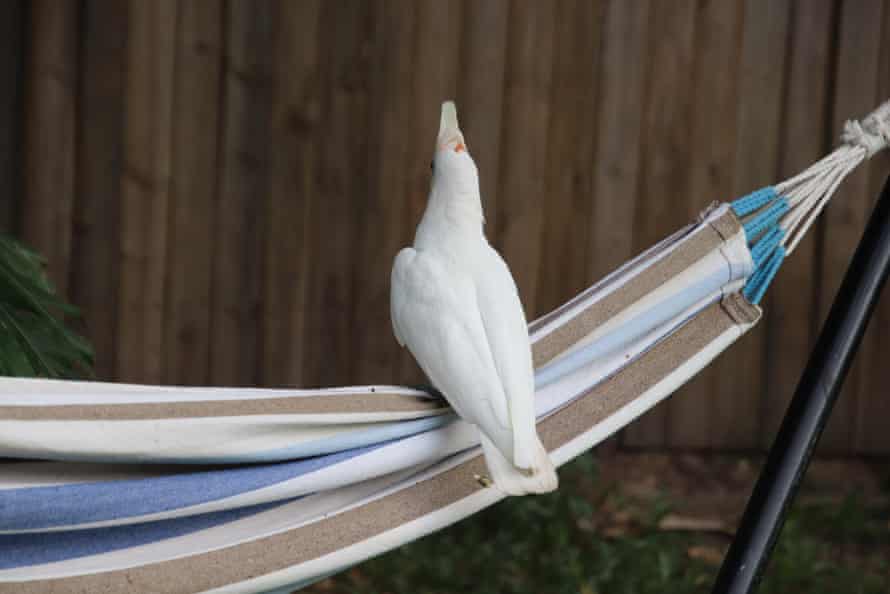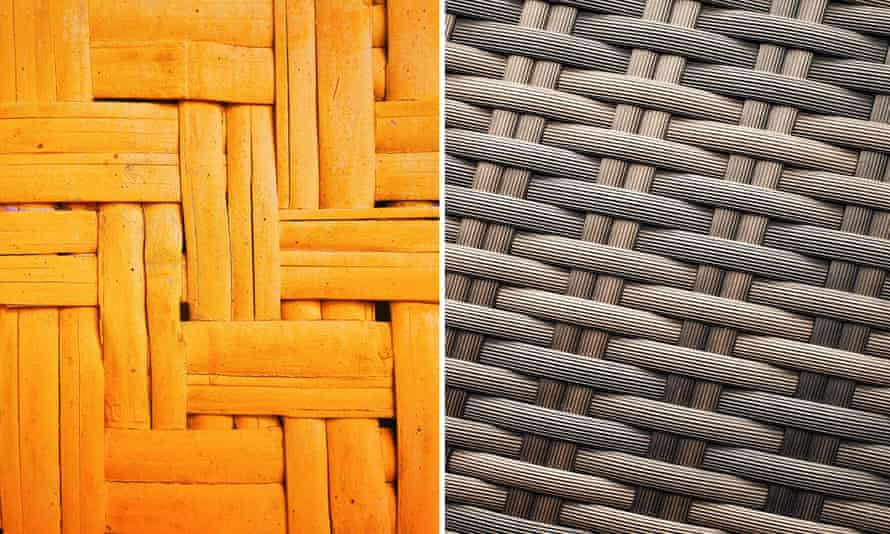Caring for outdoor furniture: ‘The most attention people pay is the day they buy it’
Australians redecorated in earnest last year – but as the elements set in, the shine quickly wears off outdoor furniture. Fortunately, there are solutions
It’s well documented that 2020 was the year of making our personal spaces more beautiful. Whether it was a balcony, backyard or rooftop, we got busy kitting out our outdoor space with chairs and tables, pot plants of all sizes or cute new greenhouses that fed our newfound gardening addictions.
So fast forward nine months and half a summer later and how is it faring? Has the timber started to fade? Is the rip-off plastic Adirondack chair that looked sturdy online turned out to be lighter than you expected, about to take off in the next stiff southerly? Are your outdoor cushions mouldy from all this season’s rain?

It’s the exposure to the elements as well as the sun’s UV rays that damages your outdoor furniture, and some materials more than others. The adage you get what you pay for definitely applies. If you think about spreading the cost of the furniture over the number of years that you want it to last, rather than baulking at the initial expense that hits your credit card, you will be ahead of the game.
Plastic furniture, in particular, tends to be on the cheaper side, and this is reflected in its performance and diminished longevity. Keeping plastic chairs or tables covered when not in use can elongate their lives, but there isn’t much that you can do when they show signs of age. Outdoor furniture made from other materials will benefit from some maintenance, however. A little bit of love and attention will carry those pieces through the rest of this summer – and beyond.
Regular attention
As a general rule of thumb, applying the elbow grease and a couple of reliable products once a year, say at the beginning of summer when its most in use, will extend the productive life of your outdoor furniture.
The Wood Doctor’s name belies the scope of their work. After 40 years in the business of restoring furniture constructed from every thinkable material, owner Adam Taylor sums up, saying: “The most attention people pay to their outdoor furniture is the day they buy it.” But what if you resolved to prove him wrong for 2021 and beyond?
Timber

“Timber is easy to maintain”, explains Taylor, “but better if you do so from the start”. If you missed the boat and you’re nine months into ownership of a rapidly greying outdoor table, all is not lost. “The next best time to do so is now,” he says.
Clean it off, removing any dust with a brush, or fine grade 00 steel wool for more ingrained dirt. Once clean, Taylor recommends Sikkens oil-based products, which enhances and preserves the natural beauty of the timber. “An oil-based product expands and contracts with the weather, feeding and protecting the wood without covering it. Other products that introduce a film that covers the wood.” This “means water gets in where there are gaps, gets trapped and causes the wood to rot from the inside out”.
Oils come in many colour tints to achieve the look you’re after. Ideally, new furniture should be given four coats of oil, applied about 16 hours apart. Once you’ve done that, it’s an annual task. Wash off any collected dust and dirt, then “slap on the oil and wipe the excess off with a clean rag”. Easy!
Fortunately for late starters, greyed-off timber is actually very fashionable at the moment (call it ultimate grey if you must). If you want to make newish timber furniture look weathered, use an oxidising product such as Sikkens Deck and Wood Cleaner Gel followed by a grey-tinted oil – because you still need to protect your objects while enjoying the patina of age and exposure.
Fabric

In an ideal world, you would have a storage space large enough to store fabric-covered items in their downtime, only to be brought out for afternoons at home, friends’ visits and barbecues. The reality is they sit outside, experiencing the full brunt of the elements day in and day out.
A sweep-down with a hard-bristle brush can remove dust and detritus like bird poo. A cold wash with a colour-fast detergent can take care of the real mess as long as they have removable covers, and a regular hose-off is advised to prevent build-up in the first place.
Cane or wicker

If you want woven-style artificial cane or wicker to successfully weather the elements in Australia, it needs to be made from UV-safe resin. Phillip from furniture store Naturally Cane advises people to buy “thicker, round ‘spaghetti’-shaped resin cane, as opposed to the flatter ‘fettuccini’ style because it’s more durable and will last longer.”
If it’s wrapped around a powder-coated frame, a sun bed or lounge has a 10-year guarantee from a shopfront like theirs. Artificial cane can be maintained using a high-pressure hose to remove the ingrained dirt. A once-over with car wash soap and water annually will also do the trick.
As for real cane or wicker – that can only survive outside where a roof can protect it.
Wrought iron

The first step with wrought iron is to qualify the state that it’s in. An average DIYer can deal with removing surface rust with a wire brush and then painting with a rust guard to prevent it taking hold again.
Adventurous DIYers with older furniture, showing signs of more deeply embedded rust, will have to pull out the grinder to remove rust, follow up with a polishing disc, then apply the anti-rust paint.
When you get to a rust level that requires sand blasting, galvanising and powder coating, it’s time to call in the professionals.
… as you join us today from Vietnam, we have a small favour to ask. Through these turbulent and challenging times, millions rely on the Guardian for independent journalism that stands for truth and integrity. Readers chose to support us financially more than 1.5 million times in 2020, joining existing supporters in 180 countries.
For 2021, we commit to another year of high-impact reporting that can counter misinformation and offer an authoritative, trustworthy source of news for everyone. With no shareholders or billionaire owner, we set our own agenda and provide truth-seeking journalism that’s free from commercial and political influence. When it’s never mattered more, we can investigate and challenge without fear or favour.
Unlike many others, we have maintained our choice: to keep Guardian journalism open for all readers, regardless of where they live or what they can afford to pay. We do this because we believe in information equality, where everyone deserves to read accurate news and thoughtful analysis. Greater numbers of people are staying well-informed on world events, and being inspired to take meaningful action.
In the last year alone, we offered readers a comprehensive, international perspective on critical events – from the Black Lives Matter protests, to the US presidential election, Brexit, and the ongoing pandemic. We enhanced our reputation for urgent, powerful reporting on the climate emergency, and made the decision to reject advertising from fossil fuel companies, divest from the oil and gas industries, and set a course to achieve net zero emissions by 2030.
